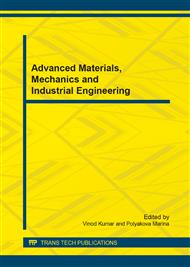p.281
p.288
p.294
p.298
p.304
p.309
p.317
p.322
p.327
Ground-Based Study on Distribution of Fire Parameters and Installation of Fire Detectors in Space-Confined Microgravity
Abstract:
The manned spacecraft is a typically confined space in microgravity and it suffers severe fire risks. This paper studies on the distribution of the fire parameters in space-confined microgravity to find a more rational way to install the fire detectors. The experiments are carried out in the ground simulation experiment platform for fire based on the International Space Station. Based on the functional simulation principle, this paper maintains Gr (Grashof number) and increases Re (Reynolds number) to simulate microgravity environment in such a full-scale platform. The results show that Fire Detector 5 on the center of the side wall and Fire Detector 7 on the corner of the ceiling are the best installing locations for smoke detection. And, temperature detection is not appropriate in manned spacecraft. Namely, the way to install the fire detectors in manned spacecraft should be different from that in normal gravity.
Info:
Periodical:
Pages:
304-308
Citation:
Online since:
July 2014
Authors:
Price:
Сopyright:
© 2014 Trans Tech Publications Ltd. All Rights Reserved
Share:
Citation:


